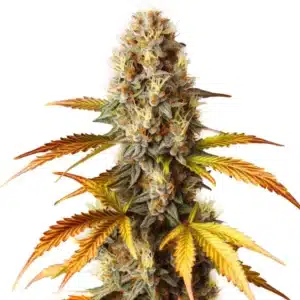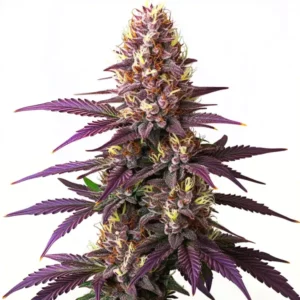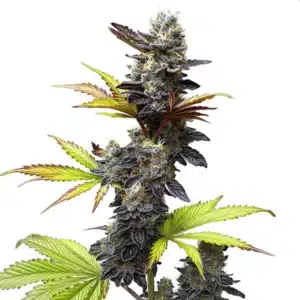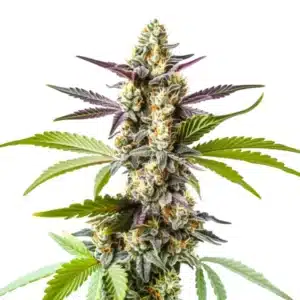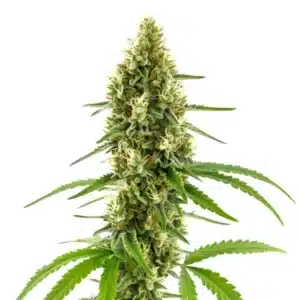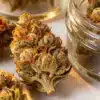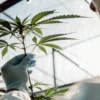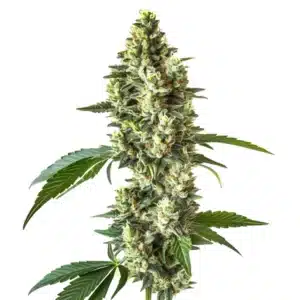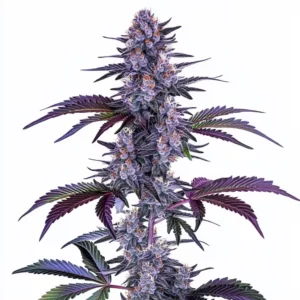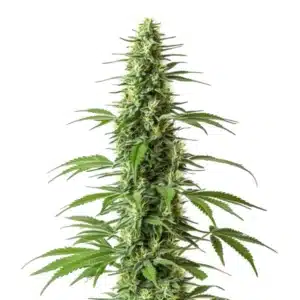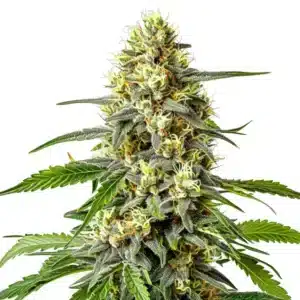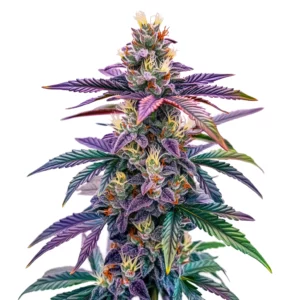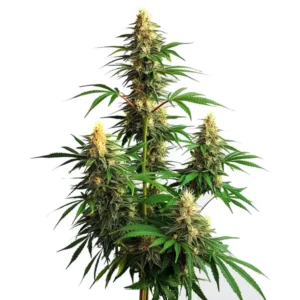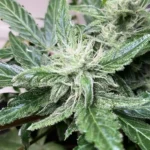
How to Grow Blueberry Headband Strain
Blueberry Headband Strain Description
Blueberry Headband is best known as an indica-dominant hybrid. Although it does contain some sativa lineage, its overall effects tend to lean more toward the indica side, providing a well-rounded mix of physical calm and mental ease.
Blueberry Headband Strain, also known as Blue HeadBand, impresses with its delicious blend of berry and citrus flavors, complemented by hints of lemon, pine, and spicy skunk. This feminized strain has a medium THC level of 12% to 18% and very low CBD (0.02%). It is a cross between Blueberry and 707 Headband, with a genetic composition of approximately 70% Indica and 30% Sativa, making it mostly Indica. The strain is known for delivering a strong and relaxing experience that leaves users feeling calm, happy, and relaxed.
Recommended Strains
Blue HeadBand
|
|
THC | 12% - 18% (Medium) |
|
|
Type | Feminized |
|
|
Yield | High |
|
|
Phenotype | 70% Indica / 30% Sativa |
Blueberry
|
|
THC | 15% - 24% (Medium) |
|
|
Type | Feminized |
|
|
Yield | High |
|
|
Phenotype | 80% Indica / 20% Sativa |
The buds are moderately dense and resinous, contributing to a high yield performance. Growers can expect yields ranging from 1.47 to 1.97 oz/ft² (450 to 600 gr/m²) and per plant yields of 2 to 4 oz (80 to 120 gr). Blueberry Headband typically reaches a height of around 9.84 ft (3 m) and has a flowering period of 8 to 10 weeks, making it suitable for all seasons and ideal for beginners. The terpene profile is marked by Alpha-bisabolol, Eucalyptol, and Humulene, which work together to reduce fatigue, alleviate muscle spasms, and ease stress by balancing energy and soothing pain through natural receptor interactions.
Promos & Deals
Blueberry Headband Strain Growing Environment
Looking for Headband strain grow info? Blueberry Headband flourishes in a stable, controlled setting. Indoor growers should maintain daytime temperatures between 70°F and 80°F (21°C-27°C) with slightly cooler nights to support proper bud development. In the vegetative stage, humidity should be kept between 60% and 70%, then reduced to 40%-50% during flowering to minimize mold risk and promote resin production. High-quality LED or HPS lights are recommended, providing 18-20 hours of light during early growth and switching to a 12/12 light/dark cycle once the plant begins flowering.
Outdoor cultivation works well when planted in a sunny spot with nutrient-rich, well-draining soil. Enrich the soil with compost or worm castings to boost fertility, and use windbreaks or simple barriers to protect the plants from strong winds. Regular monitoring and adjustments to temperature, humidity, and light are crucial to achieving a rewarding yield.
Blueberry Headband Strain Setting Up Your Grow Space
Indoor Cultivation
Create a dedicated indoor grow area, such as a grow tent or small room, with reflective materials to evenly distribute light. Use oscillating fans and an exhaust system with a carbon filter to manage heat and odors effectively. Begin with Blueberry Headband in small pots filled with high-quality soil, keeping the pH between 6.0 and 6.5. As the plants grow, transplant them into larger containers to provide ample room for root expansion.
This controlled setup allows for close monitoring and active adjustments, ensuring the plants are robust and ready for a healthy flowering phase.
Outdoor Cultivation
Select a location with full sun and prepare the soil by incorporating organic matter like compost or worm castings. Using raised beds or large containers can help improve drainage and control soil quality. Install simple windbreaks to protect your plants from gusty winds. Regular watering, combined with consistent maintenance like weed removal, supports a fertile environment that encourages vigorous growth of Blueberry Headband.
Active outdoor care helps your plants thrive naturally, leading to bountiful yields and consistent performance throughout the growing season.
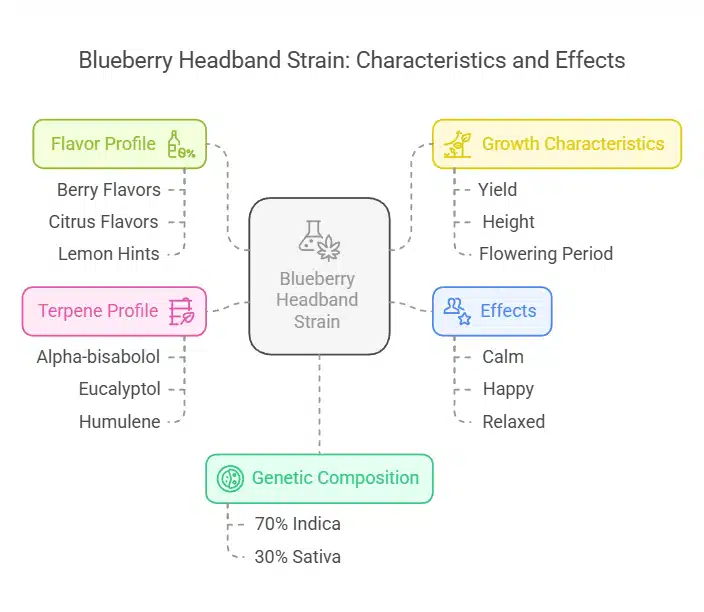
Seed Propagation and Germination
Start with high-quality feminized seeds of Blueberry Headband from a trusted supplier. Soak the seeds in distilled water or place them on a damp paper towel for 24-48 hours to soften the seed coat and trigger the taproot. Once the taproot appears, plant the seed in a container with light, well-draining soil.
Maintain a temperature between 75°F and 80°F (24°C-27°C) and humidity around 60%-70% until the seedlings develop their first true leaves. Gradually increase light intensity as they grow. These careful steps lay a solid foundation for vigorous development throughout the life cycle of Blueberry Headband.
Blueberry Headband Strain Vegetative Phase
During the vegetative phase, Blueberry Headband grows rapidly and establishes a strong structure. Provide 18-20 hours of light daily to promote robust leaf and stem development, and use a nitrogen-rich fertilizer to support healthy growth. Employ active training techniques such as low-stress training (LST) or topping to create an even canopy, ensuring all parts of the plant receive ample light.
Monitor temperature, humidity, and watering closely. Consistent care during this phase prepares your plants for a smooth transition into flowering, ultimately resulting in dense and high-quality buds.
Blueberry Headband Strain Flowering Phase
Understanding the Headband strain flowering time is essential: typically, it flowers within 8 to 10 weeks. Adjust the light cycle to 12 hours on and 12 hours off. During the flowering phase, Blueberry Headband directs its energy into producing thick, resinous buds that capture its signature berry-citrus flavor with hints of lemon, pine, and spice. Feed the plants with fertilizers high in phosphorus and potassium to enhance bud development.
Maintain cooler temperatures (65°F-75°F) and lower humidity (40%-50%) to prevent mold and maximize resin production. Support heavy branches with stakes or trellises if needed, and inspect the buds regularly with a magnifier. When most trichomes turn milky with some amber, it’s time to harvest for a premium yield.
Fertilization and Nutrition
Proper feeding is vital for a successful Blueberry Headband crop. Begin with a nitrogen-rich fertilizer during the vegetative stage to promote strong foliage, then transition to a blend rich in phosphorus and potassium during flowering to support bud growth. Maintaining a steady pH between 6.0 and 6.5 ensures that nutrients are absorbed efficiently. Adding organic supplements such as compost or worm castings can further enrich the soil, enhancing both yield and flavor.
Regularly review and adjust your watering schedule and nutrient doses. Active management of nutrients is key to keeping your Blueberry Headband plants healthy and productive.
Pest and Disease Control
Keep your grow space clean and inspect your Blueberry Headband plants daily for pests like spider mites, aphids, or thrips. Use organic treatments like neem oil as soon as any signs of infestation appear. Ensure good airflow and remove dead leaves promptly to reduce the risk of fungal diseases. If mold or mildew is detected, remove affected areas immediately and adjust humidity levels accordingly.
Prompt, active responses to any pest or disease issues will help maintain plant health and secure a successful harvest.
Blueberry Headband Strain Harvesting and Curing
Harvest your Blueberry Headband Strain when most trichomes turn milky with some amber. Carefully cut the branches using clean, sharp tools. Dry the buds in a dark, well-ventilated area with temperatures maintained between 60°F and 70°F, ensuring proper air circulation.
After drying, cure the buds in airtight glass jars. Open the jars daily during the first week to release excess moisture, then allow the buds to cure for 2-4 weeks. This process refines the flavor and potency of Blueberry Headband, preserving its unique berry and citrus aroma along with its relaxing effects.
Blueberry Headband Strain Indica or Sativa?
If you’re wondering, is Blueberry Headband Indica or Sativa, the answer is that it’s mostly Indica, with a composition of 70% Indica and 30% Sativa. It delivers a strong and relaxing experience that soothes the body while offering a calm, happy mental state. This balanced profile makes it ideal for managing fatigue, muscle spasms, and stress, and it is perfect for evening or nighttime use.
Advantages and Disadvantages
Advantages: Blueberry Headband produces aromatic, resinous buds with a delightful mix of berry, citrus, lemon, pine, skunk, spicy, and sweet flavors. It offers high yields, a strong and relaxing experience, and adapts well to both indoor and outdoor growing. Its forgiving nature makes it ideal for beginners.
Disadvantages: Its medium THC levels may not satisfy those looking for extremely potent effects. Additionally, careful nutrient and environmental management is required to preserve its delicate flavor profile, and extra support may be needed during flowering due to its height.
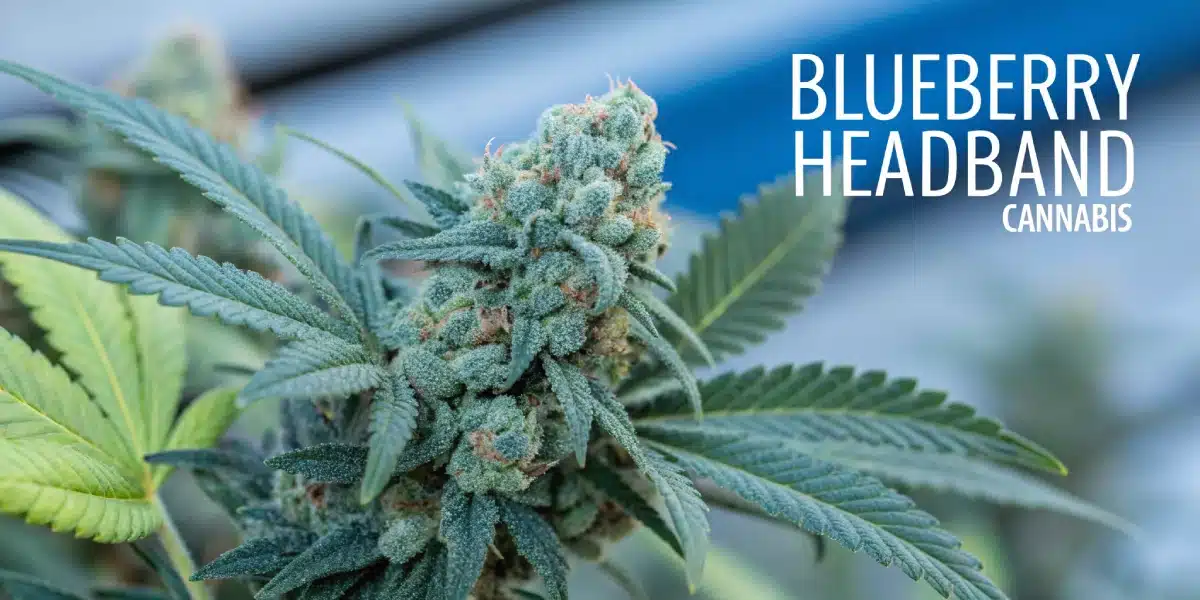
Why Buy Blueberry Headband Strain
Opt for Blueberry Headband if you seek a strain with a unique, flavorful profile and relaxing effects. Its balanced, mostly Indica nature makes it perfect for managing fatigue, muscle spasms, and stress while providing a calm, happy experience. Ideal for beginners, this strain delivers high yields and consistent performance, making it a rewarding choice for both recreational and medicinal users.
Common Growing Problems
Watch for nutrient imbalances, improper watering, and pest infestations. Overfeeding or underwatering can stress your plants, while neglecting environmental controls may lead to mold. Regular monitoring and quick corrective actions help prevent these issues, ensuring your Blueberry Headband crop remains healthy and productive.
Blueberry Headband Strain Similar Strains
Blue Dream: Blue Dream offers a fruity flavor and balanced high similar to Blueberry Headband, making it a popular alternative with reliable yields.
Haze Auto: Haze is a classic sativa with a spicy, citrus twist and energetic effects. Its creative boost is comparable to that of Blueberry Headband, though it has a longer flowering period.
Blueberry: Blueberry is renowned for its deep blueberry aroma and relaxing effects, sharing genetic traits with Blueberry Headband and offering a sweet, enjoyable experience.
Tips for Professionals
Experienced growers use timers, quality sensors, and organic supplements to fine-tune every aspect of cultivation. Keeping detailed records of light cycles, nutrient adjustments, and environmental conditions allows for quick responses to any issues. Blending modern technology with active, hands-on care ensures that Blueberry Headband consistently produces premium yields.
FAQs
What makes Blueberry Headband Strain unique?
Blueberry Headband stands out for its distinctive flavor a mix of berry, citrus, and sweet notes paired with a relaxing, strong experience. Its balanced genetic profile and high yield make it ideal for easing fatigue, muscle spasms, and stress.
How long is the flowering period?
The flowering period typically lasts between 8 and 10 weeks, during which the buds develop a dense, resinous texture and the trichomes reach their peak potency.
Can I grow Blueberry Headband outdoors?
Yes, this strain thrives outdoors in full sun with well-draining, nutrient-rich soil. Consistent care, including proper watering and wind protection, helps it produce a rewarding yield.
What nutrients does Blueberry Headband need?
During the vegetative stage, use a nitrogen-rich fertilizer for robust foliage. In flowering, switch to a mix high in phosphorus and potassium. Maintaining a pH between 6.0 and 6.5 is crucial for optimal nutrient absorption.
What training methods are recommended?
Low-stress training (LST) and topping are effective for this strain. These methods improve light penetration and airflow, leading to an even canopy and increased yields.


